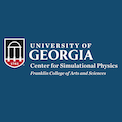The Large Scale Structure (LSS) of the Universe grew via the gravitational collapse of dark matter, but the visible components that trace the LSS-galaxies, groups and clusters-have a more complex history. Their baryons experience shock heating, radiative cooling and feedback from black holes and star formation, which leave faint signatures of hot (T~10^5-10^8 K), metal-enriched gas in the interstellar and intergalactic media (ISM and IGM). While recent Planck and X-ray studies support this scenario, no current mission possesses the instrumentation necessary to provide direct observational evidence for these “missing baryons.” Arcus leverages recent advances in critical- angle transmission (CAT) gratings and silicon pore optics (SPOs), using CCDs with strong Suzaku heritage and electronics based on the Swift mission; both the spacecraft and mission operations reuse highly successful designs. Currently in a competitive Phase A and with a potential launch in 2023, Arcus will be the only observatory capable of studying, in detail, the hot galactic and intergalactic gas-the dominant baryonic component in the present-day Universe and ultimate reservoir of entropy, metals and the output from cosmic feedback. Its superior soft X-ray sensitivity will complement the forthcoming post-Hitomi and Athena calorimeters, which will have comparably high spectral resolution above 2 keV but poorer spectral resolution than XMM or Chandra in the Arcus bandpass.
Events Calendar View
-
Departmental Colloquium
Nov 2, 2017
The Arcus Soft X-ray Grating Explorer
-
CSP Lunch Seminar
Nov 7, 2017
Studying quantum states using near term quantum computers
-
Observatory Open House
Nov 10, 2017
Observatory Viewing
We will be having another public viewing on November 10, 2017. Because of the limited space in the dome, you must have a reservation to come to this showing. Click here to make a reservation.
The observatory is located at the top of the Physics building. To get to the observatory take the elevator to the 4th floor. A guide will meet you on the 4th floor and direct your group to the stairway that leads to the observatory. As the weather can be unpredictable, we might not know whether a viewing will be possible until shortly before the event begins.
If you need more information please call 706-542-2485.
-
CSP Lunch Seminar
Nov 14, 2017
Exploring Off-campus research opportunities - Part I

Guest: Jiahao Xu & Matthew Wilson, Center for Simulational Physics, University of Georgia
Tuesday, November 14, 2017 12:30 pm - 1:30 pm
Location: CSP Conference Room (322) -
Departmental Colloquium
Nov 16, 2017
Interpretation and Misinterpretation of Newton’s Second Law for Variable Mass Systems
Misinterpretation of Newton’s Second Law for variable mass systems currently found in the literature is addressed. In particular, it is shown that Newton’s Second law in the form F = dp/dt is valid for variable mass systems in general, contrary to the claims by some authors that it is not. -
Observatory Open House
Dec 8, 2017
Observatory Viewing
We will be having another public viewing on December 8, 2017. Because of the limited space in the dome, you must have a reservation to come to this showing. Click here to make a reservation.
The observatory is located at the top of the Physics building. To get to the observatory take the elevator to the 4th floor. A guide will meet you on the 4th floor and direct your group to the stairway that leads to the observatory. As the weather can be unpredictable, we might not know whether a viewing will be possible until shortly before the event begins.
If you need more information please call 706-542-2485.
Page 76 of 121, showing 6 records out of 723 total, starting on record 451, ending on 456


